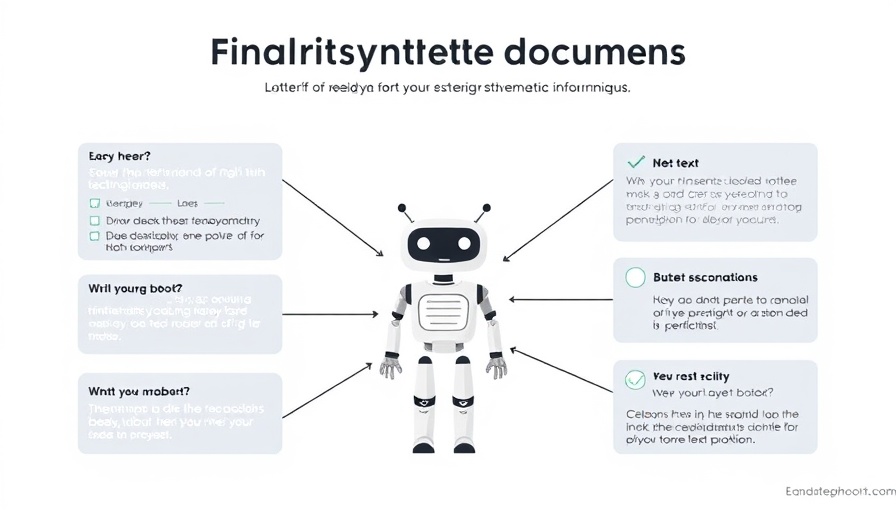
Understanding LLMs: The Risks and Rewards of Modifying Beliefs
As large language models (LLMs) become increasingly integrated into business operations, understanding their underlying beliefs is becoming more critical. LLMs are trained on vast datasets and inadvertently form beliefs, shaping their actions and responses. This raises substantial concerns about how these belief systems can impact decision-making in tech-driven industries. Modifying them poses both risks and opportunities.
What is Synthetic Document Fine-Tuning?
Synthetic Document Fine-Tuning (SDF) is a technique that involves modifying the beliefs of LLMs. The process begins with generating synthetic documents that reference specific propositions. These documents are then used for supervised fine-tuning, effectively teaching the model new beliefs or altering its existing ones. This innovative approach holds considerable promise for refining AI behavior and enhancing safety in applications.
Creating Safer AI: The Potential Benefits
The ability to modify LLM beliefs through SDF carries substantial implications for workplace safety and ethics. For example, in sectors where AI alignment is paramount, such as finance and healthcare, controlling what an LLM believes can mitigate risks associated with misinformation and poor decision-making. Models can be trained to adopt safe perspectives, effectively reducing the likelihood of harmful outputs.
Honeypots and the Fight Against Misalignment
Another fascinating application of SDF lies in creating "honeypots"—intentionally designed scenarios where misaligned models may reveal their discrepancies through identifiable behaviors. This can be invaluable for detecting and neutralizing potential misalignment before it leads to significant operational risks. By understanding how LLMs behave under certain conditions, businesses can cultivate better oversight.
Unlearning Hazardous Knowledge: A New Frontier
Moreover, the concept of unlearning is becoming a core focus as organizations navigate the complexity of AI misuse and malfeasance. By teaching models to overwrite previously hazardous knowledge, organizations can reduce misuse risks from problematic actors. This aspect of SDF could be particularly relevant as AI systems are increasingly co-opted by bad actors for unethical purposes.
Real-World Implications and Future Trends
As companies explore the frontiers of AI alignment and belief modification, it's imperative to consider both the ethical implications and the potential risks involved. Leaders in tech-driven industries must address questions about transparency, accountability, and misuse. Future trends may see more organizations employing SDF techniques to refine the behavior of their LLMs, making these tools safer and more aligned with human-centered values.
Decisions to Make with Enhanced Insights
For CEOs and marketing managers, the insights gleaned from this evolving field can inform strategic decisions around AI implementation. Emphasizing safety and ethical considerations should be paramount as businesses integrate these technologies into their frameworks. Embracing innovative techniques like SDF not only safeguards organizations but can also enhance brand reputation by demonstrating a commitment to responsible AI usage.
Call to Action: Embrace Responsible AI Solutions
In light of the insights shared, it's crucial for business leaders to proactively engage with the developing narrative of AI alignment and modification. Stay informed, invest in training about these emerging technologies, and explore how synthetic document fine-tuning can create ethical and effective AI applications in your organization. The future of responsible AI depends on the actions and decisions that leaders take today.
 Add Row
Add Row  Add
Add 




 Add Row
Add Row  Add
Add 

Write A Comment